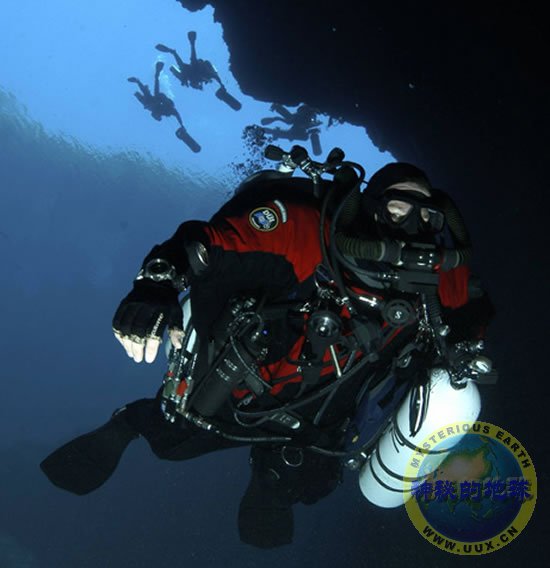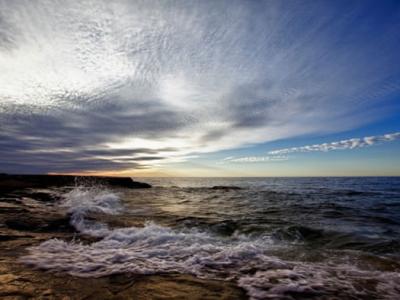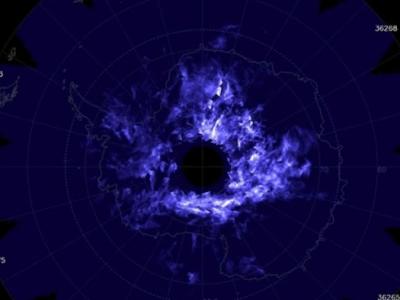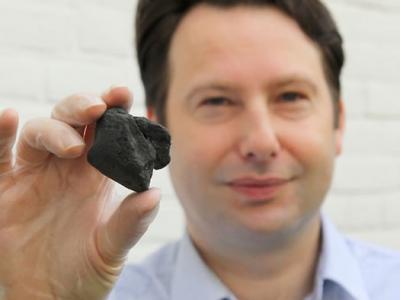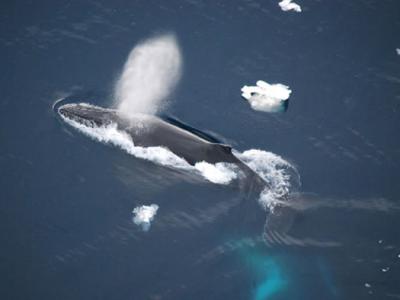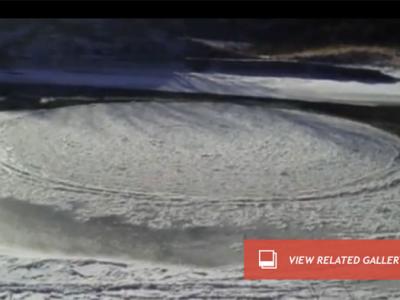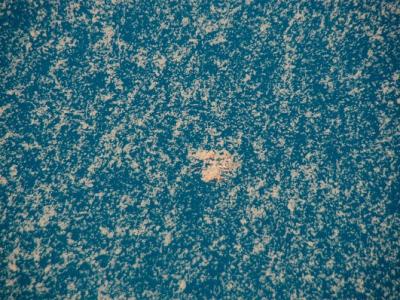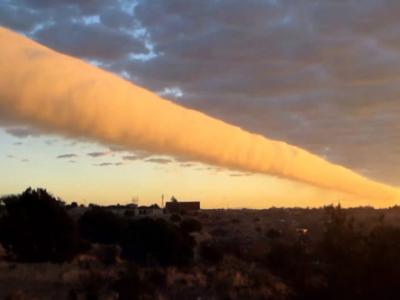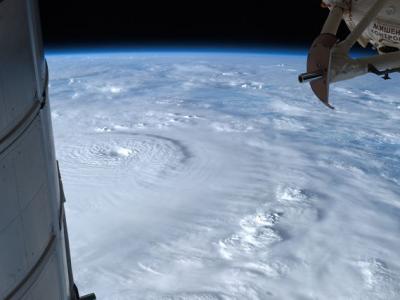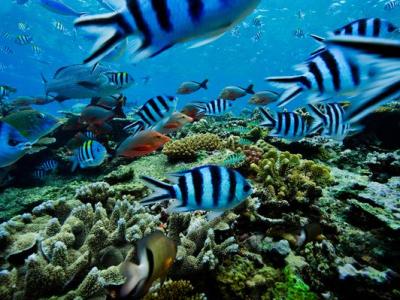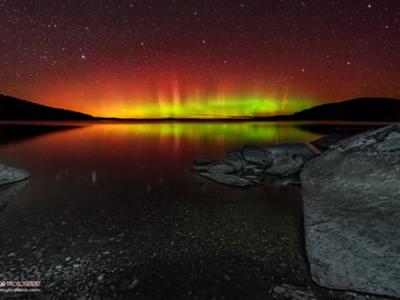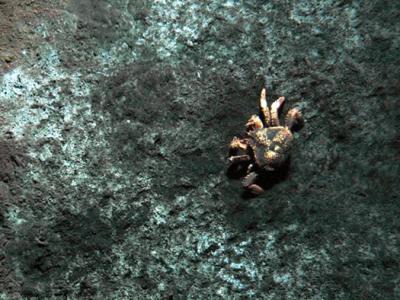Divers Break Record for Longest Cave Passage
Diver Jarred Jablonski swims through the cavern entrance to Florida's Wakulla Springs, one of the world's largest and deepest freshwater springs, in this undated photo.
Jablonski and diver Casey McKinlay shattered world records for underwater cave diving in Wakulla, swimming the longest dive between two entrances on December 15 and 16, 2007.
The expedition also showed that two cave systems in northern Florida's vast underground network are connected, which will help scientists understand how the aquifer works.
Brian Handwerk
for National Geographic News
December 17, 2007
Completing the longest dive from one cave opening to another, divers on a treacherous 20-hour journey proved that vast underwater networks in Florida are linked.
Jarrod Jablonski and Casey McKinlay dropped into a small cave entrance called Turner Sink on the afternoon of December 15 and dove to a depth of some 300 feet (91 meters).
They then swam through 7 miles (11.25 kilometers) of underground freshwater cave—enjoying what McKinlay called "an incredible ride"—before resurfacing the morning of the 16th at Wakulla Springs State Park near Tallahassee, Florida.
It took the pair over 6 hours to complete the two-entrance cave traverse, and more than 14 more to gradually decompress before surfacing.
But they did more than set a record. Working for the Woodville Karst Plain Project, the divers swam for the first time through the state's Wakulla Springs and Leon Sinks cave systems. Scientists had already proven that the caves were connected earlier this year.
(See a map of Florida).
The project aims to map the Woodville Karst Plain, a 450-square-mile (1,165-square-kilometer) region that stretches from Tallahassee to the Gulf of Mexico.
"This seemingly isolated [Leon Sinks] sinkhole in the middle of the woods is hydrologically connected to this incredible cultural and environmental resource that is Wakulla Springs," McKinlay said.
"It's difficult for people to connect one to the other, but that's what we'd [hoped to] symbolically prove."
Longest Cave
The Leon Sinks cave system—which divers with the project have explored for nearly 20 years—is the longest underwater explored cave in the United States and fourth longest in the world.
It's also part of a massive liquid labyrinth that is a critical groundwater resource for much of northern Florida.
The record dive took the duo through passages as tight as ten feet by ten feet (three meters by three meters), and into soaring caverns big enough to accommodate office buildings.
"[It was] just cruising through ... some of the most incredible cave system[s] anywhere," McKinlay said.
But the ride wasn't all smooth sailing. During the dive's second half, visibility dropped from 50 feet (15.25 meters) to about 5 feet (1.5 meters).
"We turned the corner to the Wakulla cave and conditions were worse than we expected, so that slowed us down—but we pushed on through," McKinlay said.
Support teams aided the divers at each end. But the middle of the cave traverse included a 3-mile-long (4.8-kilometer-long) stretch that no one had dived before.
"I've always used the [analogy] of being able to levitate through the Grand Canyon, seeing some of the most beautiful natural landscape in the world," Jablonski said.
Dive Dangers
The team relied on special systems to lessen the risks of such extreme diving.
The divers each used some 20 different scuba cylinders, filled with seven different gas mixtures for various depths. They also had six different underwater vehicles and two separate rebreather systems—underwater breathing aids that recycle air to conserve oxygen.
"And we have to be prepared [in case we] lose some of those resources and continue the dive," Jablonksi said.
Kelly Jessop is the cave-diving section chairman of the National Speleological Society (NSS).
"You're looking at dive and decompression times where you're in the water for more than 20 hours. That's a very, very significant dive," Jessop said.
Jessop is also familiar with conditions that can dramatically reduce visibility with little warning.
"It's not a good feeling when visibility goes zero, because basically ... you grab the little nylon line [you've laid behind you] and you feel that all the way out [backward]."
Extreme diving can also take an extreme physiological toll.
Problems with rebreathers can result in a fatal lack of oxygen (hypoxia), an excess of oxygen (hyperoxia) or too much carbon dioxide (hypercarbia).
"The other real physiological problem with this kind of dive is that there is virtually no good scientific data available to determine the required decompression," said David Sawatzky, a Canadian physician and author who has worked with the military as a diving-medicine consultant.
"That said, this group has quite a bit of experience figuring out how to decompress after these kinds of profiles through trial and error."
On to the Gulf
Nearly two decades of exploration laid the groundwork for the record-breaking dive, Jablonski said.
"The cave kept sending us in the wrong direction," he said. "So coming out today I was thinking about the thousands of feet of line we've laid down [over the years]."
(See photos of the world's deepest cave.)
Next the team hopes to explore the cave system south, to its juncture with the Gulf of Mexico—some 8.5 miles (13.7 kilometers) as the crow flies.
It's part of the Woodville Karst Plain Project's effort to map the region's underground cave systems, understand their role in the aquifer, and protect their waters from pollution.
Hydrologist Todd Kincaid, lead scientist on the team, said that raising awareness about the cave system is more exciting than breaking any world record.
"To me, the fundamental significance is demonstrating that these caves exist, how pervasive they are, and how they provide connectivity between various points in the basin," he said.
